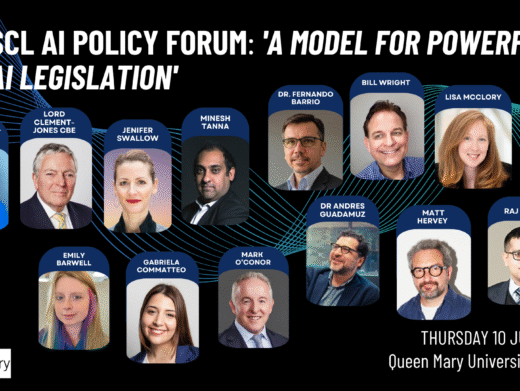On 26 January 2010 Mr Justice Ramsey handed down his 468-page judgment in Sky’s long-running and highly-publicised claim against EDS – BSkyB Ltd v HP Enterprise Services UK Ltd [2010] EWHC 86 (TCC). Sky claimed that EDS had fraudulently and negligently induced it into entering into a £54 million contract for the provision of a new customer relationship management system. The judge found that Sky’s case was proved in relation to one of the claims of fraudulent misrepresentation, one of the claims of negligent misrepresentation and a claim for breach of contract. Quantum issues remain to be determined but Sky has stated its expectation that the total award is likely to be over £200 million. The judgment makes for an entertaining read and is likely to be of great interest to all those involved in systems development contracts and their technical and legal advisers. It will be particularly relevant to those involved in sales, as the judgment analyses the components of the EDS bid and sets out the judge’s findings as to whether various communications amounted to fraudulent or negligent misrepresentations.
The Failure of the Project
Following a tendering process in 2000, Sky selected EDS to design, build, manage and integrate the CRM system. It would be an understatement to say that the project was a failure. Instead of the system going live on 31 July 2001 and being completed by 1 March 2002 at a baseline budget of £47.6 million, Sky contended that the functionality of the system was only completed in March 2006 at a cost of about £265 million. In the Particulars of Claim as they stood at the commencement of the hearing, Sky claimed damages of some £709 million.
Alleged Misrepresentations
Sky claimed that there had been five relevant misrepresentations, which it claimed had been made both negligently and fraudulently. The principal misrepresentations on which Sky relied related to the resources, time and cost required for the project. It also alleged that there had been misrepresentations regarding the use of proven technology, and EDS’ development and use of suitable methodologies.
The judge found that only the representations as to time were false, and that they were made fraudulently. Sky therefore failed to make out its claims (both in deceit and negligence) in relation to all the other alleged representations. Notwithstanding that Sky was only partially successful in proving its individual claims, the fact that the misrepresentations as to time had been made fraudulently ensured Sky’s significant overall success in the action. The finding of fraud means that the judge is entitled to make a large damages award to Sky over and above the contractual damages cap of £30 million.
Representations regarding resources
In relation to the alleged representations regarding the resources that were required and available for the project,[1] the judge focused on a statement made by EDS in a pre-contractual letter that EDS “have the resources”[2] necessary for the project. The judge analysed this statement as giving rise to two issues: “(1) Was it represented that personnel ‘were available’ or was it only that they ‘could be made available’? (2) Was [a related] representation that personnel had ‘been reserved’ a reference to all the personnel for the project or only those required for the start of the initial stage?”[3] The judge found that these statements, in context, related to the global resources available to the company group. He went on to find that Sky’s submission that EDS should have worked out what resources were required, with what skills, in what numbers and at what time, was inconsistent both with the statements made and the context of the tender responses.
In considering this topic, the judge considered extensive expert evidence relating to the estimating process.[4] He appears to have been impressed by evidence concerning the concept of a ‘cone of uncertainty’, which advanced the proposition that the effort or cost involved in a project becomes more certain as the project progresses from ‘Initial Concept’ to the final stage of ‘Software Complete’. As such, he found that ‘this necessarily means that on large or complex IT projects there is no ability to have resources available or reserved for the whole of that project.’ Both customers and suppliers should heed this observation. The judge found that the process of resource planning that Sky alleged was necessary and appropriate was one which went far beyond what is needed to satisfy the test of having reasonable grounds to support the representation that EDS had made. In context, the effect of what EDS had represented was merely that appropriate resources could be made available to be used on the project as and when they and their skills might be required.[5]
Representations regarding time and cost
The judge addressed the representations as to time and cost together. The alleged misrepresentation as to time was in two parts: first, that EDS had represented that it had carried out a proper analysis of the amount of time required; and secondly that it had represented that it held the opinion, and had reasonable grounds for holding the opinion, that it could and would deliver the project within the timescale.[6] The representations on cost were similar – that EDS had carried out a proper estimate of the cost of completing the project; and secondly that it held the opinion, and had reasonable grounds for holding the opinion, that it could and would deliver the project within the budget.[7]
The judge accepted that EDS had made the representations that Sky alleged. He accepted that there are essentially four stages to the process of estimating cost and time for an IT project.[8] First, it is necessary to estimate what work has to be done. Secondly, there has to be a calculation of the resources needed to perform that work. Thirdly, it is necessary to work out what number of resources is required to carry out the work within the period. Fourthly, it is necessary to work out whether those resources are available.
In relation to the general method of estimating effort and cost followed by EDS, the judge found that Sky failed to establish that it was not a proper process.[9] In stating a figure of £54 million in their Response, EDS had carried out a proper estimate.[10]
In relation to the estimates of time, EDS accepted that the representation it had made was false.[11] The question that remained for the court was whether that misrepresentation was made fraudulently, negligently, or innocently.
The judge found that no exercise had been undertaken to establish what work was required to be done in order to achieve go-live, no attempt had been made to do any credible planning or sequencing to establish that go-live could be achieved in nine months, and no effort had been made to establish what number of resources would be required for that purpose.[12]
With regard to fraud, the judge’s findings related to representations made by only one of the witnesses – the former EDS employee Joe Galloway. He was Managing Director of the relevant part of EDS’ business, and was held by the judge to be “the mastermind for EDS’ Response to the ITT”, which meant that his role in the project was crucial. The judge held that he “demonstrated an astounding ability to be dishonest” and that his “credibility was completely destroyed by his perjured evidence over a prolonged period”. The judge also criticised Galloway’s approach to estimating time, which was to give a date which the customer was seeking to achieve without having any proper basis for doing so.[13]
Sky’s allegations of fraud against other EDS employees failed. Sky[14] had argued that other employees were aware of the misrepresentations and had manifestly approved and adopted them.
Damages for Fraudulent Misrepresentation
One of the interesting features of the judgment arose in the context of assessing Sky’s losses resulting from entering the contract with EDS, as opposed to adopting an alternative solution which had been offered by PwC. The judge found that Sky would have engaged PwC to develop the CRM system but for EDS’ deceit. Detailed argument and analysis was presented with regard to how long PwC would have taken to implement its Siebel solution in place of EDS’ Chordiant solution. The amount and detail of that evidence, which included cones of uncertainty, retrospective function point counts, and analysis of the “fit”, contrasts very sharply with what EDS did at the time of the bid. The degree to which suppliers bidding for work will be required to estimate and plan project durations in light of the judge’s findings on fraud is obviously of importance to the IT industry as a whole.
Breach of Contract
Sky contended that by March 2001 the project was failing and that the failures amounted to, and were caused by, EDS’ breaches of contract. EDS made limited admissions of breach of contract and the judge found that there were further breaches. He concluded[15] that EDS failed to exercise reasonable care and skill or to conform to good industry practice because there was no effective programme management, the design and development of the solution was not properly documented, and EDS did not provide sufficient technical or managerial resources. Sky argued that this conduct amounted to repudiatory breaches, but the judge disagreed.[16] He also concluded that Sky, by continuing to negotiate with EDS, had not accepted any repudiatory breach even if there had been one. The damages cap of £30 million applied to the claim for damages for breach of contract.
Other Findings
The judgment addresses several other issues, including the failure of an ‘Entire Agreement’ clause to exclude liability for pre-contractual misrepresentations, the failure of a ‘Memorandum of Understanding’ to achieve a settlement of certain earlier disputes, and the extent to which an exclusion clause would have been effective – but for the findings of fraud – to exclude ‘anticipated savings’ damages based on planned staff reductions.
For lawyers, one of the more interesting additional findings concerned the impact of the contractual structure on the question of whether a duty of care existed. The judge held that “in considering whether a contractual provision affects the existence or the scope or extent of a duty of care, the test is whether the parties having so structured their relationship that it is inconsistent with any such assumption of responsibility or with it being fair, just and reasonable to impose liability. In particular, a duty of care should not be permitted to circumvent or escape a contractual exclusion or limitation of liability for the act or omission that would constitute the tort”[17].
Appeal
EDS was taken over by Hewlett Packard after the completion of this project. Hewlett Packard have released a statement which makes two points. The first is that this is a legacy issue. The second is that they intend to appeal. It appears likely, therefore, that Mr. Justice Ramsey’s judgment will not be the final judicial pronouncement on this matter.
Duncan McCall QC and George Woods are members of the IT Group at 4 Pump Court, Temple, London, EC4Y 7AN: www.4pumpcourt.com
[1] Para562
[2] 610
[3] 606
[4] 616
[5] 631
[6] 660
[7] 669
[8] 698
[9] 733
[10] 772
[11] 804
[12] 785
[13] 914
[14] 915
[15] 1346
[16] 1371
[17] 356




